The Ultimate Beginner's Guide to Terrariums (Simple Tips + Projects to Try)

If you're new to the world of terrariums or simply want some straightforward answers to your burning questions, you're in the right place.
Making a terrarium is often sold as either super-easy or near impossible for a total beginner.
The truth lies somewhere in between.
In this article, I will show you how simple it is to make something healthy and beautiful while avoiding the common mistakes many newbies make.
I'll be talking specifically about:
- The essential components of a terrarium
- How to make your first terrarium
- Common terrarium mistakes
And as a bonus – I'm going to answer as many FAQs as I can!
Ready?
Let's begin.
Contents
- What Is a Terrarium?
- How Does a Terrarium Work?
- What Are Terrariums For?
- What Do I Need to Make a Terrarium?
- How Do I Make a Terrarium?
- How Do I Care For My Terrarium?
- Terrarium FAQs
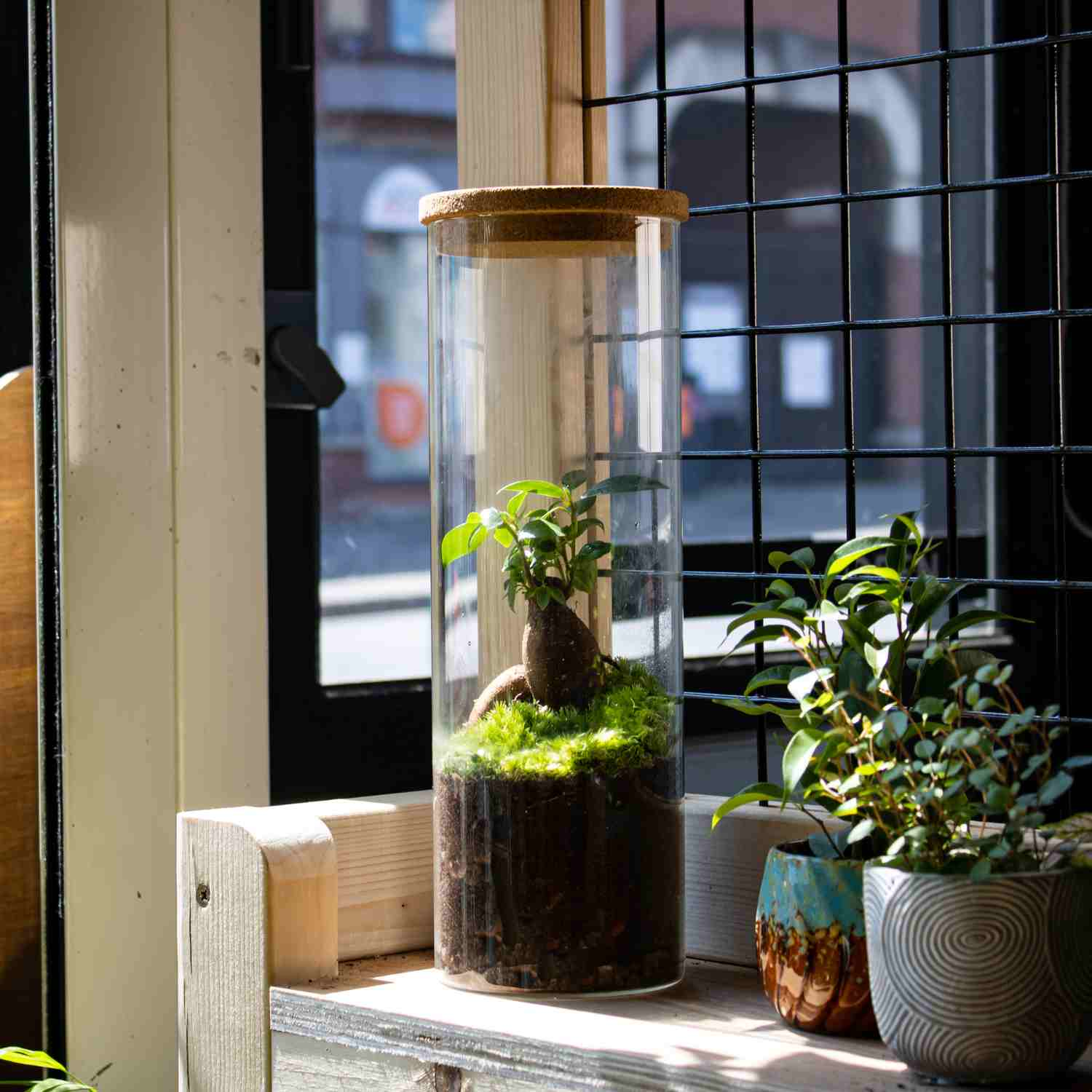
1 | What Is a Terrarium?
It's a good question.
Here's the short answer:
A terrarium is a sealed environment in which organisms such as plants and animals can thrive and self-sustain harmoniously with very little external intervention.
It is, in essence, a microcosm of our ecosystem.
Here's the long(er) answer:
A terrarium comprises several components that come together inside a container to form an ecosystem.
The container is typically made from glass, though any transparent (and clean!) material can suffice.
A terrarium is usually sealed, though it may have a small opening for airflow.
It is debatable whether the environment must be sealed to be considered a terrarium.
However, the most essential factor is that the ecosystem must be substantially self-sufficient.
So, an open glass container housing cacti and succulents would be a planter, not a terrarium.

2 | How Does a Terrarium Work?
On many of my videos (especially TikTok), I get comments from bewildered people in disbelief that terrariums are even possible.
Some think they're a cruel novelty that will die off in a matter of days; others argue I've discovered perpetual energy.
Neither are quite on the money.
To understand how a terrarium works, you need to know how plants work:
- A typical terrestrial plant requires light, heat, nutrients, water and CO2.
- Nutrients are stored in the soil and are then taken up into the root systems of the plants.
- The plants then use photosynthesis to produce oxygen.
- At night, the plants respire. This means they take in the available oxygen and convert it into CO2.
- Roughly 99% of the water taken up by the plants is then transpired (evaporated) out into the ecosystem.
- The water condenses on the glassware and rains back down onto the soil for the process to repeat again.
It's just a miniaturised version of what happens every day, all across planet Earth.

3 | What Are Terrariums For?
I get asked this question a lot: What's the point?!
In fact, it usually arrives on my Instagram comments simply as 'But why tho'.
My usual response is what you'd expect: 'Why not?'
But, in fairness, there are a few answers I could give:
1. Transport
The Wardian case is one of the earliest reported terrariums to have existed.
It's named after Nathaniel Bagshaw Ward – the man who discovered a method for transporting plants across the high seas.
Previously, budding botanists had struggled to transport their exotic finds across long journeys, but our Nate-dog found a way.
The same fundamental principles of the modern terrarium were applied to keep the plants in a harmonious cycle until they reached their new, strange home.
Although, admittedly, terrariums are notoriously IMPOSSIBLE to ship long distances today.
They're just so darn fragile.
Also, delivery drivers seem to enjoy 'yeeting' packages as hard as possible.
Anyway, I digress.
2. Science
Ah, science.
A word historically used by oddballs to explain away their bizarre doings to friends, family and onlookers.
What's that noise coming from the basement? Science.
Why can I smell burnt hair in here? Science.
What are you doing with a bunch of plants and bugs stuffed inside a jar? Science.
So yeah, that's why I'm making terrariums.
What are you doing? Not science? Grow up.
3. They're gosh-darn gorgeous
Forget what I said before.
I'm not doing it for science.
I'm doing it because they look awesome.
It's basically a living, breathing rainforest that you can have sat atop your desk while you work; what's not to love about that?
There are genuinely incredible designs out there from artists all over the world.
Even though it's got a century-old history, the art of terrarium making is only just picking up pace.
And, heck, here are some bonus reasons:
- If you suck at taking care of plants, terrariums take care of them for you.
- Do you want to go on holiday but don't want all your plants to die? Terrariums have got your back.
- Need a way to impress your friends who previously thought you were super boring? Make a terrarium. Terrariums = friendship.
- If you get real good at making terrariums, you can exchange them for cash. Lovely cash.
4 | What Do I Need to Make a Terrarium?
There's a little bit of wiggle room on what you actually need to make a terrarium.
Other articles and videos will give you a massive list of 'essential' supplies, but the real list is far simpler.
The typical recipe for a healthy terrarium constitutes a series of substrates and plants.
I'll tell you what you need and where you can get it.
Materials to make a terrarium:
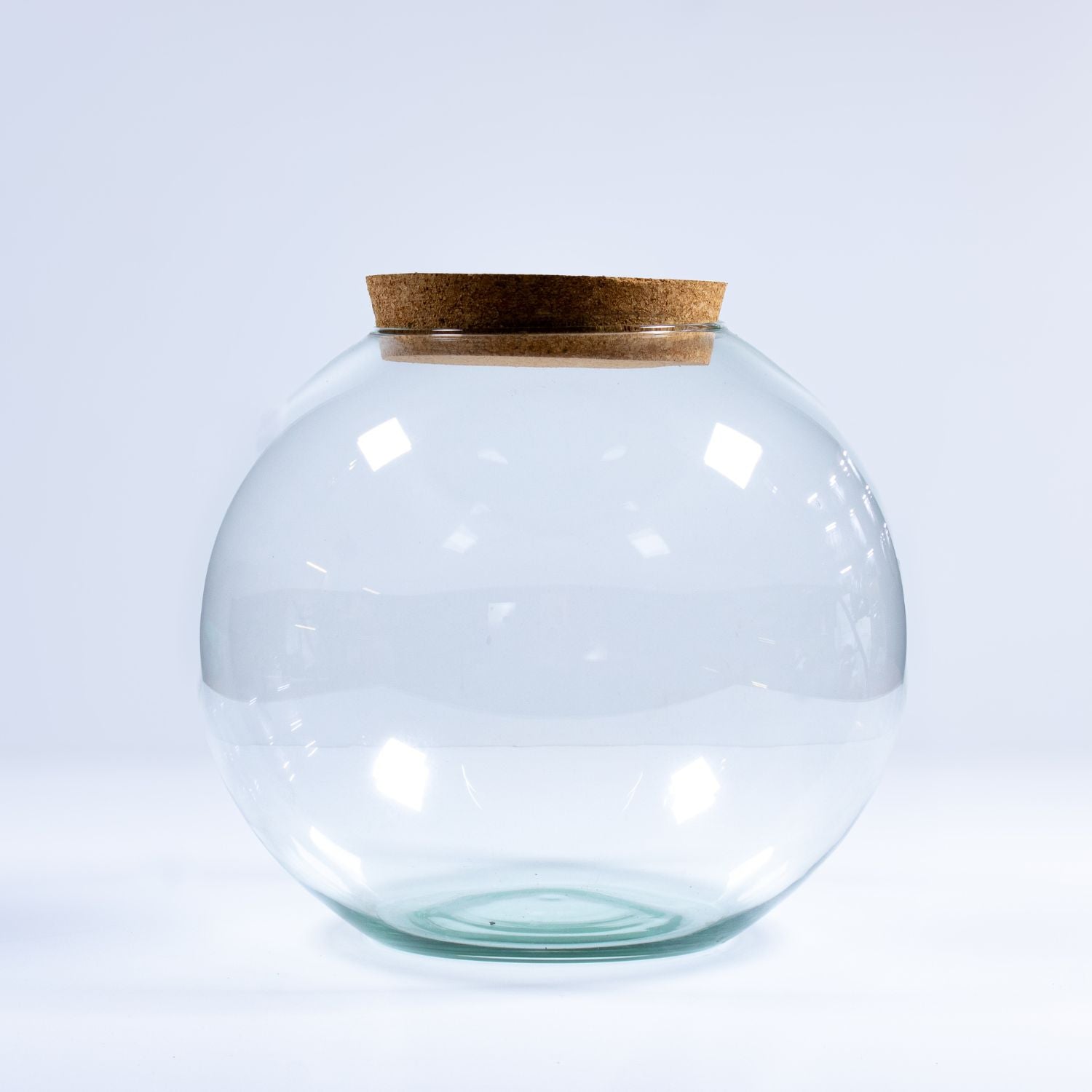
1. A Container
You will, before anything else, need a house for your organisms.
You can use any clean glass or plastic container with a lid or a narrow opening.
Something as simple as an old spice jar will do, or you could look for something larger like a mason jar or demijohn.
Alternatively, you could use a plastic bottle.
Where can I buy terrarium containers?
Well, we sell our own! They're handmade using recycled glassware. Check out our range of glassware.
If you're in the US and don't fancy the shipping fee, check out terrarium glassware here.

We always recommend LECA, but clean gravel works well for drainage - too!
2. Drainage
The bottom-most layer of a terrarium is usually the drainage layer.
This simply means a layer of material that will allow excess water within the ecosystem to drain away from the substrate, protecting the plants from rotting.
I would recommend LECA, sand or gravel for a basic drainage layer.
LECA is ideal as it is lightweight, durable, sustainable and wicks water back up to the plants if they need it.
Where can I buy terrarium drainage?
If you're in the UK: we sell LECA right here.
For those further afield, have a look at our Etsy recommendations to find what you need.

3. Substrate
Your main substrate layer is, basically, soil.
As your environment is going to be sealed, you will end up using plants that favour higher levels of humidity – such as tropical plants.
You must then use the right sort of soil to accommodate your plants.
General potting mix will do just fine in most cases.
Still, I would recommend using a specifically tropical substrate mix.
I use a 2-2-1 mix of coco coir, worm castings and orchid bark.
Where can I buy terrarium substrate?
Well, if you're going for potting mix it's pretty easy to come by in garden centres and nurseries.
We do have our own, hand-blended tropical medium that you can get your hands on.
Alternatively, browse some options from the United States

Hedera complex is always a stand-out terrarium plant choice for beginners.
4. Plants and Moss
Atop your layers will live your plants.
Moss is an ever-popular option among terrarium enthusiasts, and there are many types to choose from.
You can go about foraging yourself if you know what you're doing, or you can buy some online.
While most mosses enjoy humidity, not all of them appreciate a lack of airflow, so make sure what you want to use will suit the environment.
Where can I buy terrarium moss?
You can purchase one of our live moss bundles if you're shipping to the UK.
Below are some more options for US buyers
What about Plants?
I'd recommend seeking out smaller tropical plants.
There is a whole world of plants suitable for the terrarium environment, but I've narrowed it down to the top 13.
The easiest beginner plant for terrariums is the Fittonia.
It's bright, colourful, and hardy.
They enjoy humidity and damp soil and can tolerate varying levels of light.
Not only that, they're darned easy to find.
Where can I buy Terrarium Plants?
In the UK, you can buy Fittonias and other terrarium plants in our tropical plants bundle.
We also have an extensive range of other tropical plants for sale.
Browse below for terrarium plant options in the USA.
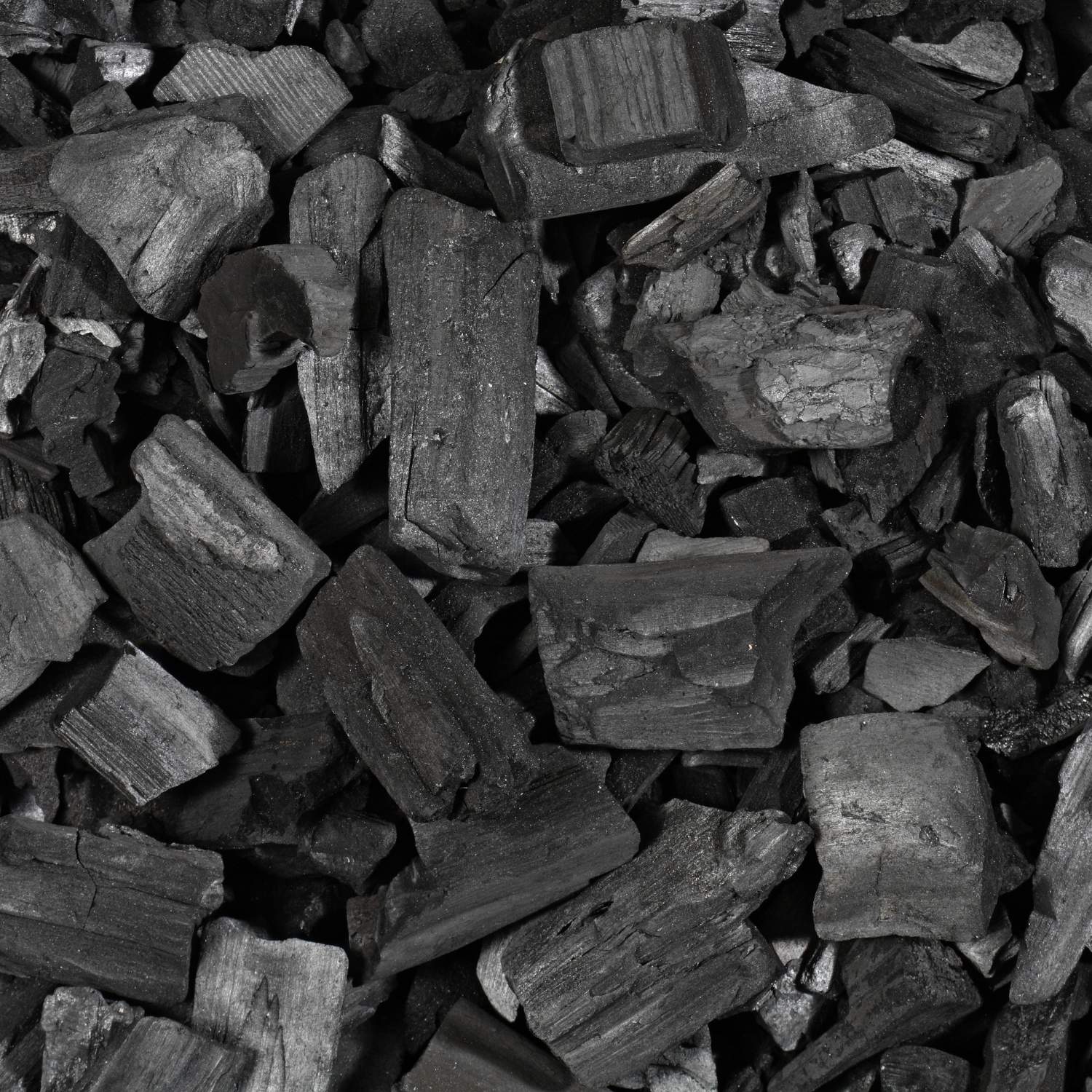
5. Activated Charcoal (Optional)
Charcoal becomes 'activated' when treated at incredibly high temperatures.
This makes it insanely porous and thus an excellent filter.
I always sprinkle a thin layer of activated charcoal atop my drainage layer.
Why?
It's kind of like an insurance layer.
You hope that no harmful toxins or chemicals enter your ecosystem, but, if they do, you want something to take care of it.
And, I hear you say: 'Can I use BBQ charcoal instead'?
Yes!
Basic charcoal is porous, but the activated kind is most effective.
Where can I buy activated charcoal?
We've got some for sale in our shop!
If you're in the USA, have a look below.

6. Decoration (Optional)
The success of a terrarium primarily rests on its ability to function.
But that doesn't mean we should neglect the form.
Adding decorative elements to your terrarium can really jazz up the aesthetics.
I recommend using Dragon Stone if you're a beginner.
It's readily available, easy to break apart and looks gorgeous.
Plus, we've got it for sale right here!
Alternatively, get your hands on some ready-to-go models and figurines to give your terrarium a little character (pun intended).
Where can I buy figurines and models for terrariums?
It's a great question!
There are tons of great models out there.
Often, we source a range of pieces from aquarium and reptile shops.
But, if you're looking for something unique, have a look on Etsy!
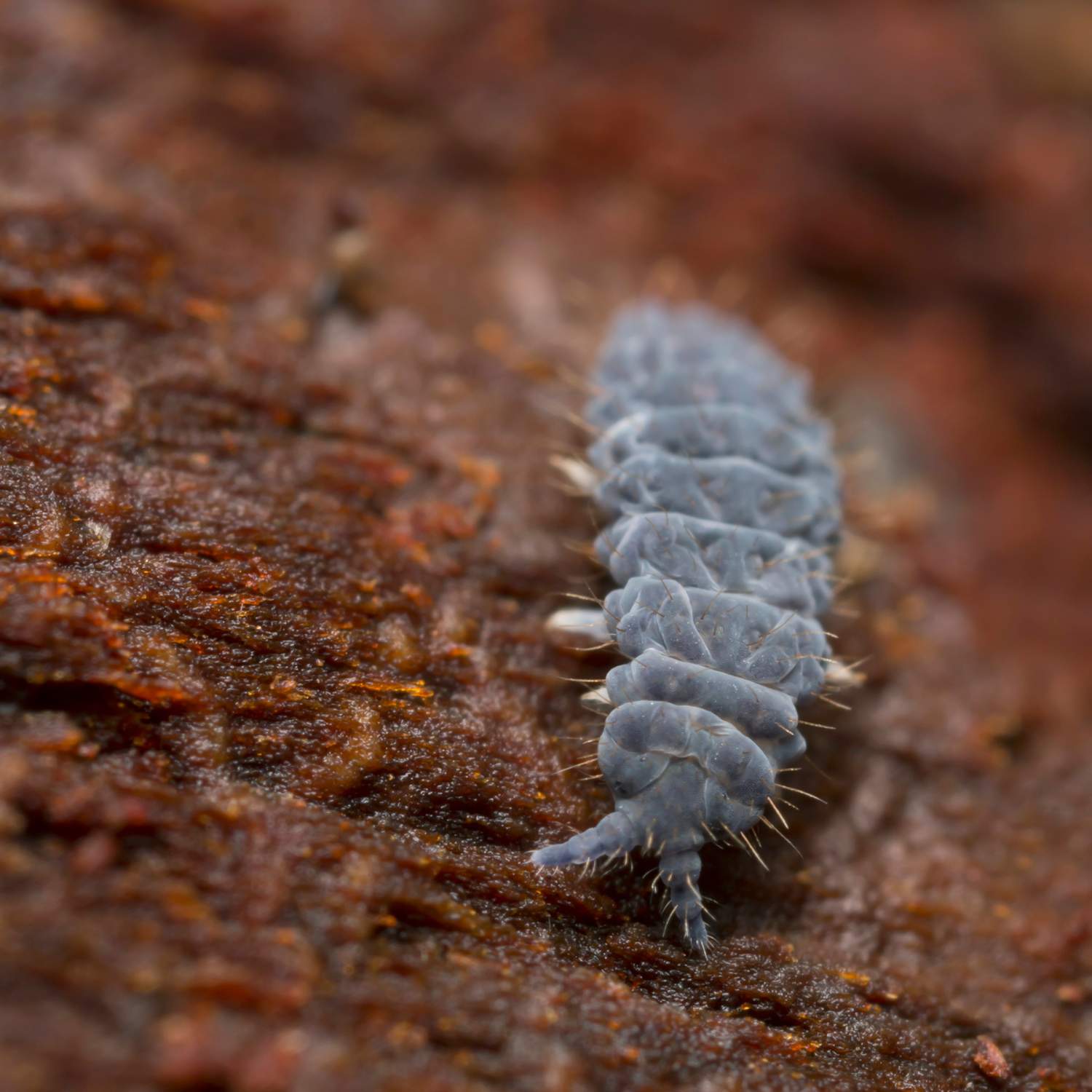
7. Microfauna (Optional)
Microfauna or Mesofauna are tiny little bugs that can become right at home in your ecosystem.
Not only will they happily take up residency, but they'll actually go to work for you.
Detritivores like Springtails help break down decaying organic matter and return nutrients to the substrate.
This means your plants will continue to be fed, grow, and shed leaves – leading to more food for your critters ad Infinitum.
There's a deep, fascinating world of microfauna in terrariums, and you can learn about it here.
Where can I buy Springtails?
If you're UK based, get Springtails here.
If you're in the US, get Springtails here.
5 | How Do I Make a Terrarium?
We have arrived at the crux.
Since you now know what a terrarium is, why they're fantastic and what you'll need to get started, the only thing left is to make one.
It's honestly not as complicated as you might think.
Getting the big bits right is easy. The layers, the plants and whatnot.
It's the little hiccups that often succumb creations to an early demise.
But don't worry – I'm here to steer you clear of those misdemeanours.
Here's what I'll do.
With every step, I'm going to tell you:
- What to do
- What NOT to do
Sound good?
Let's go.
Step 1: Preparation
What to do:
- Gather everything you need ahead of time and ensure all your equipment and materials are clean.
- Think about what design you'd like to achieve before you get started.
What not to do:
- Spend ages obsessing over the exact right gear, plants, and you.
- Get stressed out if it doesn't go exactly how you imagined the first time around.
Step 2: Drainage
What to do:
- Pour in your drainage material to stand as a layer about an inch up the glass.
- LECA, gravel or sand are great options for drainage.
What not to do:
- Forget to wash your drainage throughly if foraged from the outside.
Check out my article on keeping your ecosystem healthy and free from mould.
Step 3: Substrate
What to do:
- If you've got some activated charcoal on hand, you can sprinkle a little bit on top of your drainage layer before your substrate.
- Pour in your substrate. It does depend on your container, but anywhere between 1-3 inches up the glass should be fine.
Here's a tip:
- Slope your substrate from back to front. This way, you get more surface area to work with, and you can create a background/foreground effect.
What not to do:
- Olace in too much substrate.
It's easy to be a little generous with this layer, but remember that all of your layers are one substrate layer together – just with some of the functions separated apart.
It's not that your ecosystem could be harmed by too much substrate; it's just that you're liable to eradicate valuable space for your plants.
Oh, and one more pointer – don't use dirt from the garden.

Step 4: Large Decoration
What to do:
- Place in your large decorative elements before your plants
- Consider your design by giving yourself a hardscape to work around.
What not to do:
- Use wood if you're not going to use microfauna.
Wood will mould – probably around 95% of the time.
Bugs like Springtails will keep the mould in check, but the mould could take over without this.
Learn more about keeping your terrarium mould-free here.
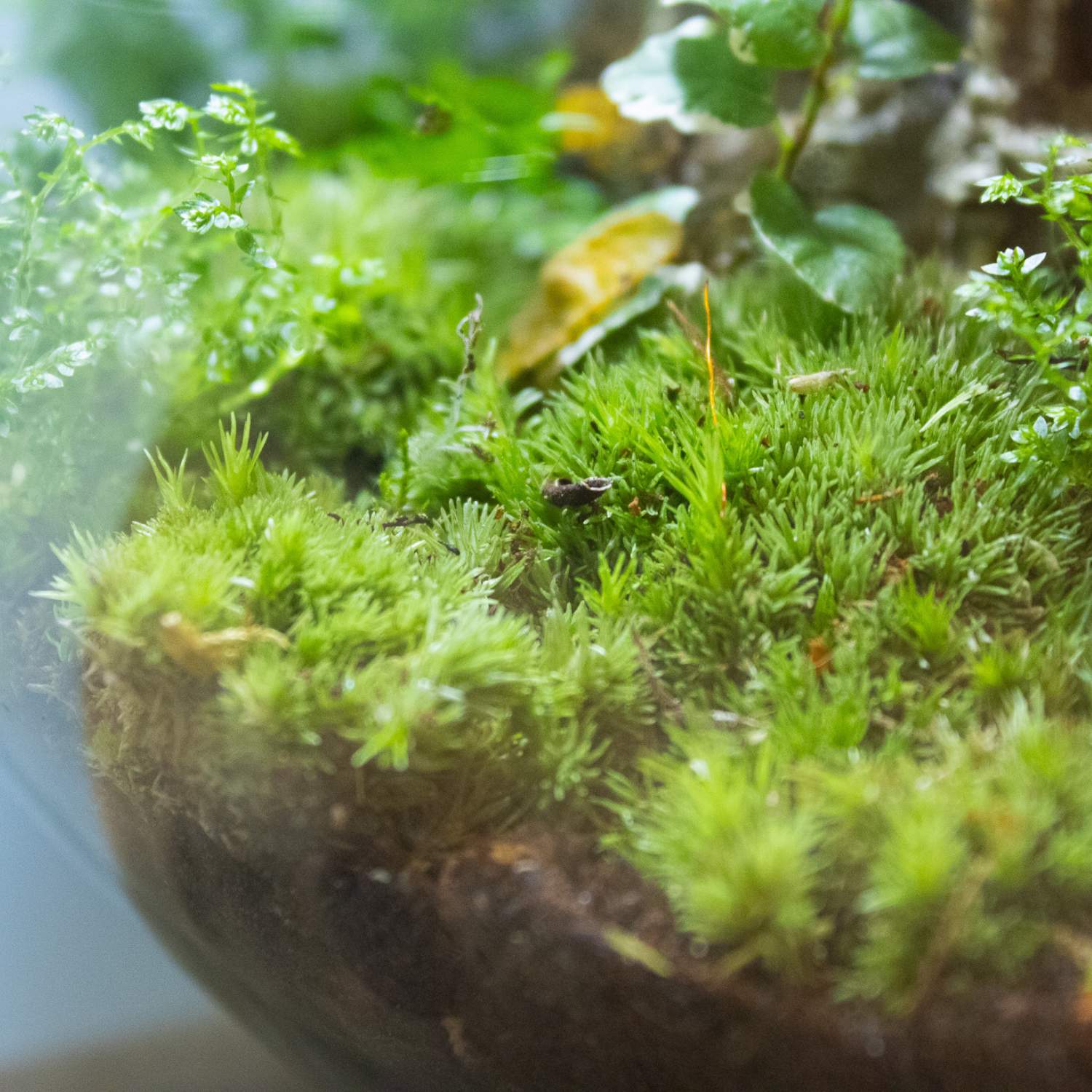
Step 5: Plants and Moss
What to do:
- Take a whole plant, split it at the root level or even, in some cases, take a cutting of a plant to place inside the soil.
- If you've got a rooted cutting, make a small hole inside the substrate, and nestle it inside.
- Push the soil up around the base of the plant to secure it.
- If you're using unrooted cuttings, you can simply place them stem-down inside your moss or soil.
I like to plant my rooted cuttings first, followed by my moss, and then finish the design off with your cuttings.
What not to do:
- Use succulents or cacti.
- Try to shove huge plants inside a small container.
Succulents and cacti, for example, won't fair well inside of a sealed environment.
Give your plants plenty of room!
I would recommend tropical plants in general.
Here are my top 13 terrarium plant recommendations.
Step 6: Extra Details
What to do:
Now that your terrarium is complete – it's time for any finishing touches.
- Add some small pieces of stone, figurines, cuttings, or sand.
- Take things out if your design is too busy.
What not to do:
- Don't obsess.
-
Leave it be and look again with fresh eyes.
I know it's hard not to.
You can always come back and make changes later.

Step 7: Watering
What to do:
- Using a mister, gently spray the inside of your terrarium with distilled water.
A fine spray mister should be able to evenly coat your plants and soil.
I suggest distilled, rain or reverse osmosis water rather than tap water.
This is important, because tap water contains a lot of minerals that can:
- Leave watermarks on your glass
- Harm your moss
What not to do:
- Overwater your terrarium.
This is the terrariums' greatest killer.
I would try to avoid pouring in water and remember that your substrate, mosses, and plants already contain some water, to begin with.
Always err on the side of less water, as you can top it up later if you really need to.
If you think you have overwatered your terrarium, leave the lid off for a day and let some excess water evaporate.
6 | How Do I Care For My Terrarium?
Lighting
Bright, indirect sunlight is best for most terrariums.
I, however, have often simply used bright white 5700k LEDs on a 12-hour timer, and they've served me well.
You can use grow lights; just be careful of the intensity and the heat – these are plants used to forest floors, shady areas, etc.
Temperature
A mild temperature befits most closed terrariums.
Again, think of where these plants are used to growing.
Avoid placing your terrarium near windows in winter or near radiators or electric appliances.
Watering
You may rarely need to top up your terrarium with a bit of water.
To do so, gently mist the inside of your ecosystem with some distilled water.
But, how do you know when to water a terrarium?
If your plants are wilting, your soil looks light in colour, or your moss is crispy to the touch – you probably need a top-up.
If there's been no condensation on your glass for some time, check the above variables to see if some more H20 is in order.

Pruning
If your terrarium is a success – you should start to see some growth anywhere between a few days, weeks or months. I've found every set-up is a little different.
Eventually, you can trim some of the excess if your plants look like they're beginning to outgrow their container.
You may well, too, be able to repropagate your cuttings and use them in another terrarium!
Callisia repens, for example, grows super quick and is easy to repropagate.
7 | Terrarium FAQs
Where can I buy terrariums and supplies?
If you're in the UK – we've got pretty much everything you need on this very website.
But, if you're further afield and need some supplies – we've compiled a handy list of some of our favourites here.
How do I get rid of fungus gnats?
I know; they're super annoying.
But, don't worry.
The first point I'll make is that their population will eventually decline.
If you want to get rid of them ASAP, take a yellow sticky pad and replace your lid for a day.
You can also get smush-happy with a paintbrush.
How often should I water my terrarium?
Terrariums need water on an 'if-and-when' basis. If your terrarium soil or moss feels dry the touch, it may be a sign that you need to water your terrarium.
Use a mister, and err on the side of less water - just to be safe.
How much do terrariums cost?
It depends on many factors, including where you are in the world and how big your terrarium is going to be.
Look at my article here for how to make a terrarium for free.
If you're looking to buy a ready-made terrarium, they range anywhere from £20-£500.
How do I make a terrarium?
I've written out a handy step-by-step above this FAQ section – why not check it out?
How do I pronounce 'terrarium'?
Tuh-rare-ee-um.
NOT tuh-rain-ee-um.
How much light does a terrarium need?
About 6-12 hours of medium-low light will suffice.
I'd recommend bright, indirect sunlight or bright white LEDs.
What are the best plants for a terrarium?
Tropical plants are best.
Some of my favourites include Fittonia, Callisia repens, Peperomia and Pilea.
How do you ship a terrarium?
There's no sure-fire way to ship a ready-made terrarium.
I'd suggest avoiding it.
Otherwise, you can hold everything in place with tissue paper and hope for the best!
How long will a terrarium last?
Terrariums don't really have a lifetime.
They can go on indefinitely.
There's a famous case of a man called David Latimer.
He kept a terrarium alive in his attic untouched for over 50 years!
How do I deal with terrarium mould?
I've got you covered – check out this article.
Should I feed my terrarium?
I would say 'maybe'. You could sprinkle in some worm castings if growth starts to slow down after a year or two.
If you've got microfauna inside your set-up, you can feed them a little fish food, dry rice or yeast every so often to boost the population.
Can I use wood in a terrarium?
Yes, but without the use of microfauna such as Springtails, it is liable to turn quite mouldy.
Can I put bugs in my terrarium?
You sure can! Read our article on Springtails here.
You can also consider introducing millipedes, earthworms, snails and isopods into your ecosystem.
Make sure to source them ethically and research their needs before including them.
Does my terrarium have to have bugs?
Nope. They're optional.
I will say, though, that they certainly add longevity given their janitorial role.
What do you use for your terrarium substrate?
Me personally?
I use a 2-2-1 mix of coco coir, worm castings and orchid bark.
This provides water retention, aeration, drainage, nutrition and nutrient delivery.
It's also a mix that avoids using unsustainable materials like peat moss and sphagnum.
What should I do if I've overwatered my terrarium?
Wipe excess condensation from the inside of the glass and consider leaving the lid off your terrarium for a couple of days so excess water can evaporate.
Is condensation in a terrarium good?
Yes! It means the water cycle is active.
Why is my terrarium foggy?
Condensation forms as a result of the water cycle.
But, if the glass is especially misty, it might mean that the glass is on the cheaper side.
Our handmade, recycled glassware doesn't get misty like this.
How do I make a vertical terrarium?
- Lean your glassware horizontally and pour in the soil where you'd like it to be
- Flatten the soil as best you can, and use a paintbrush end to help.
- Lightly mist the soil
- Press it down again
- Place your moss on top of the soil
- Press the moss hard onto the soil
- Turn your glass right way up, and voila!
What type of moss is best for a terrarium?
Personally, I love to use Dicranum scoparium and Thuidium tamariscinum the most.
Can I use preserved moss in a terrarium?
I would generally recommend avoiding mixing live and preserved components.
Preserved moss is usually dyed, meaning exposure to water would let the colours run.
Can I put a cactus in a closed terrarium?
You can do whatever you want, but the cactus won't like it!
Even an 'open' terrarium isn't great for a cactus; they need to be able to totally drain water from their substrate.
Do I need a mesh layer for drainage?
Nope.
This is a common misconception.
A mesh layer will do a good job and keeping your drainage layer separate from your substrate, but there's two things to remember:
- Roots will grown down beyond the drainage layer regardless
- Your drainage layer is only there for insurance, you can't stop overwatering with a mesh layer
- Mesh layers tend to look pretty ugly from the outside
That's All For Now!
You've now got a grip on all of the fundamentals of terrarium making and an understanding of how they work.
Furthermore, make sure to bookmark this page. I'm going to keep updating the FAQ section to always check back if you have another question.
Speaking of questions, do you have one I've not answered?
Leave a comment below, and I'll get back to you ASAP!
- Joe










Out of the plants you listed for a beginner,what can I grow from home as I am gathering all I need and want to grow my own instead of extra cost buying full plants. Thank you
Thank you for such a great article. I am new to the hobby and about to build my first terrarium. You have given me some valuable information and advice.
Such a brilliant read and so much information! Thank you so much for sharing all the tips, you’ve helped me clear up several “hmm I’m not sure I’m doing it right” queries so thank you so much!!! Your passion for terrarium is so inspiring!
Thanks for such an informative post. A quick question- what tools do you use to put & decorate the items inside a narrow neck bottle? Where can I find those?
Great post, chock-full of the best tips and ideas ever! ❤️Can’t wait to “dig into” this medium! Thank you.
Leave a comment